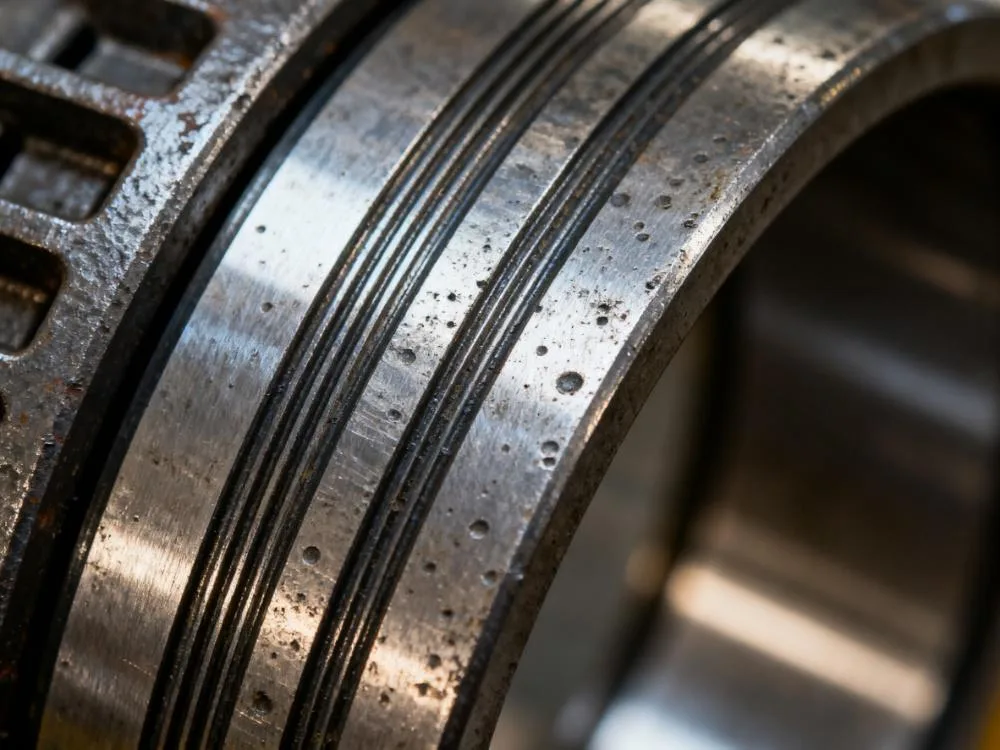4 Key Solutions of VFD Shaft Current Burns Bearings
Hello everyone, today I’d like to share a typical field challenge:
“When a 90kW VFD drives a 75kW motor, frequent shaft current issues cause bearing burnout. Even with dual grounding installed, the problem persists. How can this be resolved?”
VFD shaft current is one of the most challenging faults in variable frequency drive applications. This issue becomes more pronounced as motor power increases. If mishandled, it can readily cause motor bearing failure, ultimately leading to shutdown.

Principles of VFD Shaft Current Generation
The root cause of shaft current lies in common mode voltage within the VFD Drives.
Due to non-perfect synchronization of IGBT switching actions in the inverter unit’s three-phase bridge arms, common mode voltage arises from pulse width modulation (PWM).
This common mode voltage couples to the rotor through VFD parasitic capacitance:
- Parasitic capacitance forms between stator windings and rotor → accumulating extra voltage on the rotor
- Capacitance forms between rotor and housing → voltage conducts through the bearing oil film, forming a closed circuit
- When accumulated voltage exceeds the threshold, it breaks down the bearing oil film, creating a discharge path
This ultimately generates VFD bearing currents and may lead to motor fluting on bearings.
Mechanism of Bearing Electroerosion
- Capacitive discharge effect: The oil film thickness between the bearing raceway and balls is only 0.1–1 μm, exhibiting a small capacitance (approximately 10–100 nF).
- Micro-arcing: When voltage exceeds 15–30V, the oil film breaks down. Instantaneous temperatures surpass 10,000°C, causing thermal erosion on the bearing surface.
- Electrochemical corrosion: Lubricating oil reacts with metal under high temperatures and electrical current, accelerating damage.
- Typical characteristics: “washboard” striations or pits (electrolytic pits) appear on the inner raceway, accompanied by bearing oil film breakdown. This manifests as increased bearing noise, heightened vibration, excessive temperature rise, and ultimately leads to electric discharge machining (EDM)-type damage.
VFD Bearing Protection Solutions
The approach to addressing VFD shaft current primarily involves three levels:
Physical Measures
- Use conductive grease to reduce parasitic capacitance in bearings
- Employ insulated bearings for VFD motors to isolate current pathways
- Install a motor shaft grounding ring (SGR) or grounding brush on the motor shaft to divert shaft voltage to ground, preventing current flow through bearings
Electrical Measures
- Install VFD common mode chokes or magnetic rings on three-phase cables to effectively suppress common-mode currents
- Install output reactors or LC filters to reduce high-frequency harmonics
- Ensure correct wiring orientation: connect the inductive end to the VFD and the capacitive end to the motor to prevent IGBT temperature protection from triggering and causing burnout
Parameter Optimization
- Appropriately reduce VFD carrier frequency to lower shaft current, minimizing high-frequency voltage caused by IGBT switching
- Note: Excessively low carrier frequency may induce motor noise or high-frequency vibration. Adjust cautiously following the VFD troubleshooting guide
System Optimization and Preventive Measures
- Grounding Optimization: Ensure proper grounding for the control cabinet, VFD, and motor, with ground resistance ≤ 0.1Ω
- Cable Length Control: VFD cable length and shaft voltage are closely related. Excessively long cables increase parasitic capacitance; ideally keep lengths under 50 meters
- Shield Grounding: If the motor power cable has a shield, ground both ends simultaneously
- Preventative Maintenance: Regularly inspect bearings, motor insulation, and cooling systems to prevent potential issues
Conclusion
VFD shaft currents cannot be eliminated by a single measure alone. Typically, a combination of grounding measures, electrical suppression, and parameter optimization is required. Integrating VFD bearing protection solutions (such as insulated bearings, shaft grounding rings, filters, etc.), along with controlling cable length and carrier frequency, effectively reduces VFD bearing currents and prevents motor bearing failures caused by VFDs.
